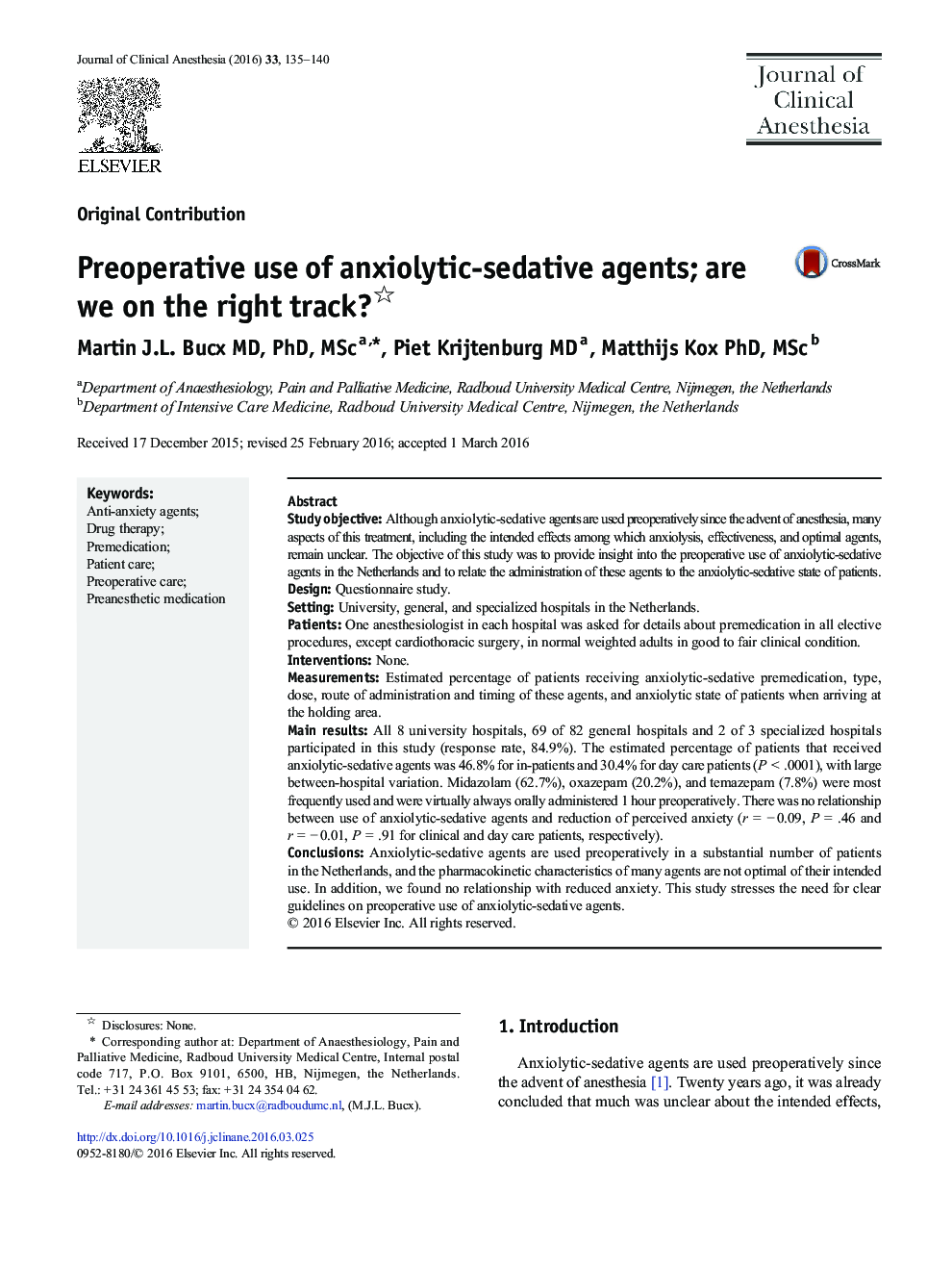| Article ID | Journal | Published Year | Pages | File Type |
|---|---|---|---|---|
| 2762103 | Journal of Clinical Anesthesia | 2016 | 6 Pages |
•Anxiolytic-sedative agents are used preoperatively in 30% to 50% of patients.•Benzodiazepines are most frequently used, typically 1 hour preoperatively.•Many agents have not the optimal pharmacokinetic properties for this use.•We found no relationship between the use of these agents and reduced anxiety.•Clear guidelines on the preoperative use of anxiolytic-sedative agents are needed.
Study objectiveAlthough anxiolytic-sedative agents are used preoperatively since the advent of anesthesia, many aspects of this treatment, including the intended effects among which anxiolysis, effectiveness, and optimal agents, remain unclear. The objective of this study was to provide insight into the preoperative use of anxiolytic-sedative agents in the Netherlands and to relate the administration of these agents to the anxiolytic-sedative state of patients.DesignQuestionnaire study.SettingUniversity, general, and specialized hospitals in the Netherlands.PatientsOne anesthesiologist in each hospital was asked for details about premedication in all elective procedures, except cardiothoracic surgery, in normal weighted adults in good to fair clinical condition.InterventionsNone.MeasurementsEstimated percentage of patients receiving anxiolytic-sedative premedication, type, dose, route of administration and timing of these agents, and anxiolytic state of patients when arriving at the holding area.Main resultsAll 8 university hospitals, 69 of 82 general hospitals and 2 of 3 specialized hospitals participated in this study (response rate, 84.9%). The estimated percentage of patients that received anxiolytic-sedative agents was 46.8% for in-patients and 30.4% for day care patients (P < .0001), with large between-hospital variation. Midazolam (62.7%), oxazepam (20.2%), and temazepam (7.8%) were most frequently used and were virtually always orally administered 1 hour preoperatively. There was no relationship between use of anxiolytic-sedative agents and reduction of perceived anxiety (r = − 0.09, P = .46 and r = − 0.01, P = .91 for clinical and day care patients, respectively).ConclusionsAnxiolytic-sedative agents are used preoperatively in a substantial number of patients in the Netherlands, and the pharmacokinetic characteristics of many agents are not optimal of their intended use. In addition, we found no relationship with reduced anxiety. This study stresses the need for clear guidelines on preoperative use of anxiolytic-sedative agents.
